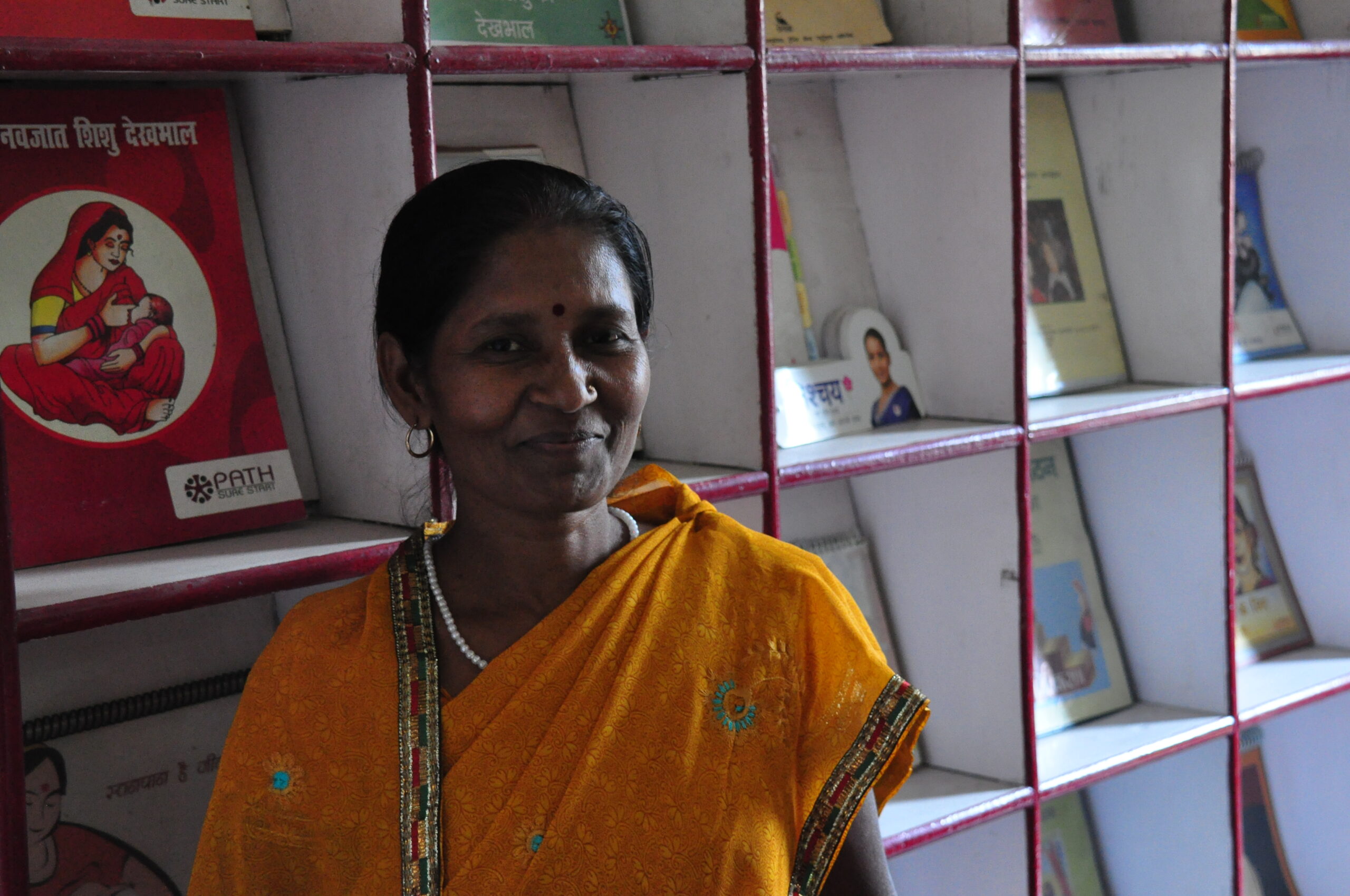To learn more about Digital Green’s AI-powered platform and how it impacts small-scale farmers in India, Ethiopia, Kenya, Nigeria and Nepal, we encourage you to sign up for our newsletter.
Kalavati Devi: Using Videos to Trigger Behavior Change

Contributed by Pallavi Lal
On a sultry summer afternoon, Kalavati Devi scurries around her house trying to finish all her chores in time to conduct a mothers group meeting at the Anganwadi center in Jeegon village, Rae Bareilly district of Uttar Pradesh, India. She has been working as an Accredited Social Health Activist (ASHA) under Government of Indias flagship National Rural Health Mission (NRHM) since 2008. ASHAs are frontline workers who serve as an integral link between the community and the health system, promoting key health behaviors and mobilizing the community to access available health services.

At half past noon, Kalavati reaches the center, where pregnant and lactating women, their mothers-in-law, sisters-in-law and a few kids are settling down for the meeting. Following the registration of new members and checking attendance, a video on exclusive breastfeeding is screened by Kalavati in the darkened room using a battery-operated Pico projector. She occasionally pauses the video, allowing for discussions within the group. There is constant murmuring in the room as the women recognize an actor (usually a local community member) in the video, which increases in volume when Kalavati herself appears on screen.
The screening is punctuated with questions from the women: Why do we need to feed the newborn within an hour of delivery?Why cant we feed the newborn with goat milk or jaggery? Kalavati handles these and other doubts with finesse. Towards the end of the screening, she encourages all the members, especially the silent ones, to share their experiences. The key messages from the video are summarized and reinforced to the audience. Though a few older women still cling to their cultural beliefs, which their families have practiced for generations, the video does succeed in triggering questions and generating a discussion. The session draws to an end with Kalavati leading everyone in a song that touches upon key health messages and reiterates the importance of maternal and neonatal health.
Parwati, a young mother, endorses the effectiveness of the approach: “We are now able to understand breastfeeding positions easily as these are conveyed explicitly through the videos. We are also able retain messages better through videos, as we are able to see and hear.

Kalavati is part of the Digital Public Health (DPH) pilot project, initiated in 2012 through a partnership between Digital Green, PATH and Grameen Vikas Sansthan (GVS). Leveraging Digital Greens model of video-enabled learning and mediated dissemination, the pilot promotes key maternal and neonatal health behaviors through ASHAs in 27 villages of Rae Bareilly.
DPH-led video screenings are mediated by ASHAs during monthly screenings at mothers group meetings and Village Health and Nutrition Days (VHNDs). Pawan Kumari, an ASHA from Churwa village, says Initially, I was very scared of using the Pico projector for the screening. I thought I would never be able to learn how to operate this technology, but with continuous mentoring and support, I am now able to use it with ease and confidence. The videos offer a medium through which ASHAs can promote health behaviors with ease and increased clarity.
Before this, ASHAs relied on verbal communication, games and print job aids such as posters, flip charts and flash cards to convey key health messages during mothers group meetings and on VHNDs. It was often difficult for them to remember everything that had to be communicated. They would often need to refer to prompters written behind the job aids, which would obstruct the smooth flow of the session. Now, conducting meetings using Pico projectors has become easier, and attendance has also improved. We have to speak less as the video does most of the talking but we facilitate the discussions around the video to address concerns and reiterate the messages, Indira Mishra, an ASHA from Sarura village recounts.
A Community Advisory Board (CAB), comprising members from diverse backgrounds and institutions, including the Department of Health, Women and Child Development and Panchayati Raj institutions is responsible for vetting the content and videos, as well as monitoring the pilots progress, challenges and lessons learnt at quarterly meetings. ASHAs too are included in the CAB, thus including voices from the grassroots, ensuring an inclusive approach to the delivery of health messaging. Playing dual roles of community member and representative of ASHAs in the CAB, Kalavati says I feel important when I am given the opportunity to share the same platform with high ranking officers, and my experience is respected and valued by the CAB. For approving the content and videos, she pays close attention to the language of the messaging in the video to ensure that it does not offend or hurt community sentiments.

Kalavati, Pawan Kumari, Indira Mishra and others like them have come a long way from the day they got appointed as ASHAs. They entered the frontline heath workforce with skeletal knowledge and skills and are now respected, confident, knowledgeable and experienced members of the community. With the introduction of DPH, the ASHAs have taken a leap in skill enhancement and consequently in effective delivery of health messaging. They are no longer seen solely as vehicles for the delivery of content, but are also being increasingly acknowledged for their contribution to the development of that content.